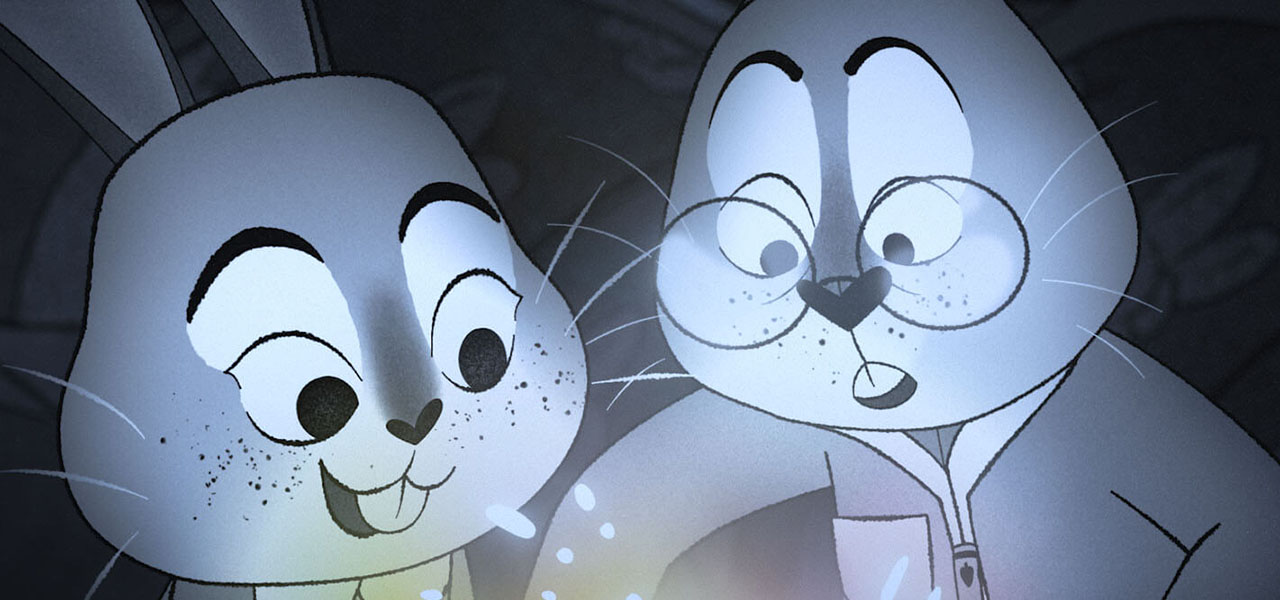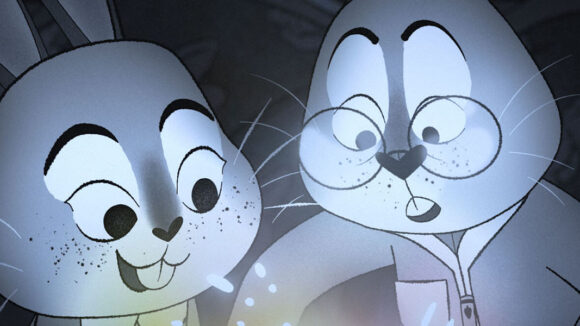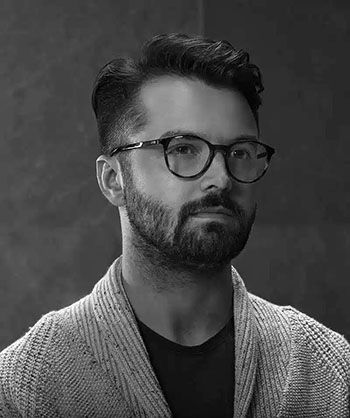

2025 Oscars Short Film Contenders: ‘Where Rabbits Come From’ Director Colin Ludvic Racicot
Cartoon Brew is putting the spotlight on animated short films that have qualified for the 2025 Oscars.
Today’s film is Where Rabbits Come From from Canadian filmmaker Colin Ludvic Racicot. The short earned its Oscars qualification by winning best animated short at the Canadian Screen Awards.
In a cold, dystopian world drawing on classic Disney influences infused with a sense of eerie oppression, a widowed father rabbit tries to instill an ounce of wonder and magic into his daughter’s life after the mysterious disappearance of her mother. The film was produced by Montreal-based Studio Niloc.
Cartoon Brew: Yours is a story of creativity and art against oppression and a totalitarian society. How did you feel as an artist bringing that story to life?

Colin Ludvic Racicot: At the heart of the film is the theme of pure love and resilience. Even in the darkest times, parents will go to any lengths to bring joy to their children. That notion of boundless love, combined with the power of imagination, is something I wanted to infuse into the story, illustrating how we can endure adversity and triumph against all odds.
In a world where freedom of expression and human rights are increasingly under threat, it feels more important than ever to tell stories that address these themes. Animation, in particular, is a fantastic medium for exploring such topics in a way that can resonate with both children and adults. My hope is that audiences walk away from the film with their hearts a little fuller, carrying a renewed sense of hope and a belief in the power of imagination, and magic.
What was it about this story or concept that connected with you and compelled you to direct the film?”
The story is a love letter to imagination and parenthood. As a father, I was immediately drawn to the idea of a father struggling to bring joy to his daughter by finding magical, imaginative ways to open up a new world for her. I’ve always been fascinated by magicians, and as a storyteller, I see something profoundly captivating in the art of illusion. Isn’t magic, in its essence, much like cinema? Both create the illusion of a world that enchants, entertains, and reawakens our sense of wonder. I’ve always been drawn to films that linger in your mind, films that invite you to reflect on the nature of life’s illusions. That’s what this film explores — breaking through the barrier of illusion to reach the imagination and joy that reside within every child.
What did you learn through the experience of making this film, whether in terms of production, filmmaking, creativity, or the subject matter?
This spirit of collaboration was especially meaningful to me because this was my first animated short. Having previously directed live-action short films, I approached this project with fresh eyes and a sense of excitement. The transition was both challenging and exhilarating, and I took the time to educate myself extensively before, during, and even after production – with the help of an amazing team. My previous experience certainly influenced how I approached the project: I planned shots and sequences as though I were shooting with a real camera – trying my best to give an organic, grainy feeling to the scenes.
Collaborating with animators was an incredibly refreshing experience. Each animator brought their own unique “acting” style, infusing the characters with a bit of their own personality. They truly are the performers of the film, along with our voice actors. One of the highlights was working with the brilliant composer Benoit Charest. I’ve long admired his work, especially on The Triplets of Belleville, so witnessing him bring our story to life through music was deeply inspiring. I had asked Benoit to draw inspiration from Ennio Morricone, and he embraced that wholeheartedly. The resulting score is powerful, emotional, and unique — something I’m immensely proud of!
Can you describe how you developed your visual approach to the film? Why did you choose this style and technique?
The possibilities felt endless at the start, but we needed to narrow our focus on a visual style that would best serve the story. Our characters are intentionally charming, yet carry a slightly somber edge, mirroring the bittersweet world they inhabit — a place delicately balanced between whimsy and melancholy.
While cut-out animation was our primary technique for efficiency, we were determined to avoid the typical, recognizable look of cut-out work. We used deformers and textured pencil lines to create fluidity, giving the animation a more handcrafted, organic feel. To enhance this, we animated the fx elements traditionally, integrating them seamlessly to preserve a sense of classic animation within the modern cut-out approach.
I’ve always been deeply influenced by the classics; they’re the foundation of my creative instincts. Films like Sleeping Beauty, 101 Dalmatians, Fantasia, The Land Before Time, and The Nightmare Before Christmas have shaped my inner artist since I’m a child! The art direction itself is closely tied to the film’s themes. The characters’ world is intentionally dark and monochromatic — a reflection of a place where joy, fantasy, and imagination are stifled. But outside of that bleak environment lies a vibrant, colorful world. The real magic and color, however, come from the characters themselves, emphasizing that true fantasy lives within them. It’s their inner world that brings the film’s colors to life, reinforcing the message that imagination can break through even the darkest confines.
